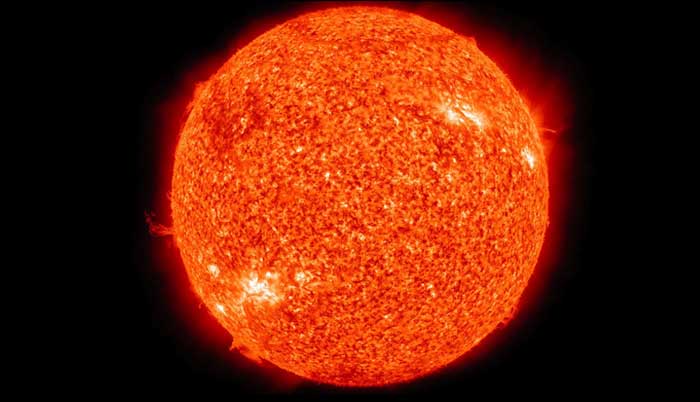![]() Home > Space & Science
Home > Space & Science
How Was The Sun Formed?

The Sun: Our Perfectly Average Middle Aged Star Credit: Space.com
![]() November 1st, 2017 | 09:57 AM |
November 1st, 2017 | 09:57 AM | ![]() 8223 views
8223 views
SPACE.COM
In a wide expanse of space, gravity drew dust and gas together to create the young solar system. The sun formed first from the vast material, with the planets close behind. But how did a sea of swirling particles become the brightest star in our sky?
"The sun is terrifying and gorgeous, and it's also the best physics laboratory in our solar system," Sabrina Savage, project scientist for NASA's Hinode at NASA's Marshall Space Flight Center in Huntsville, Alabama, said in a statement.
Although it may look empty, space is filled with gas and dust. Most of the material was hydrogen and helium, but some of it was made up of leftover remnants from the violent deaths of stars. About 4.5 billion years ago, waves of energy traveling through space pressed clouds of such particles closer together, and gravity caused them to collapse in on themselves and then start to spin. The spin caused the cloud to flatten into a disk like a pancake. In the center, the material clumped together to form a protostar that would eventually become the sun.
"There is a rotationally supported disk around this protostar," astronomer John Tobin told Space.com about a similar early sun, adding it's a "key element" in building planets. "It lets the material hang out long enough for the planet formation process."
The young protostar was a ball of hydrogen and helium not yet powered by fusion. Over tens of millions of years, the temperature and pressure of the material inside increased, jumpstarting the fusion of hydrogen that drives the sun today.
"A star the size of our sun requires about 50 million years to mature from the beginning of the collapse to adulthood," according to NASA. "Our sun will stay in this mature phase … for approximately 10 billion years."
The formation of the sun didn't take up all of the cloud it was born from. What was left continued to orbit the star, while planets formed from the leftover material. The sun is an average-size star, not too big and not too small. Its size makes it an excellent star to orbit, as it is neither large and fast-burning nor small and dim.
Several billion years from now, the hydrogen inside of the sun will run out, and the star will swell up into a red giant with a radius extending to Earth's orbit. The helium at its core will also be consumed. The star will never be hot enough to burn the oxygen and carbon that are left behind, so the sun will fizzle out and become a white dwarf.
Of course, when the sun was born billions of years ago, no human scientists were around to study it. Astronomers learn about the life of the sun by studying the myriad of stars in the Milky Way. Combined with models, these observations can help tell us about the youth of our closest star.
Source:
courtesy of SPACE
by Nola Taylor Redd
If you have any stories or news that you would like to share with the global online community, please feel free to share it with us by contacting us directly at [email protected]